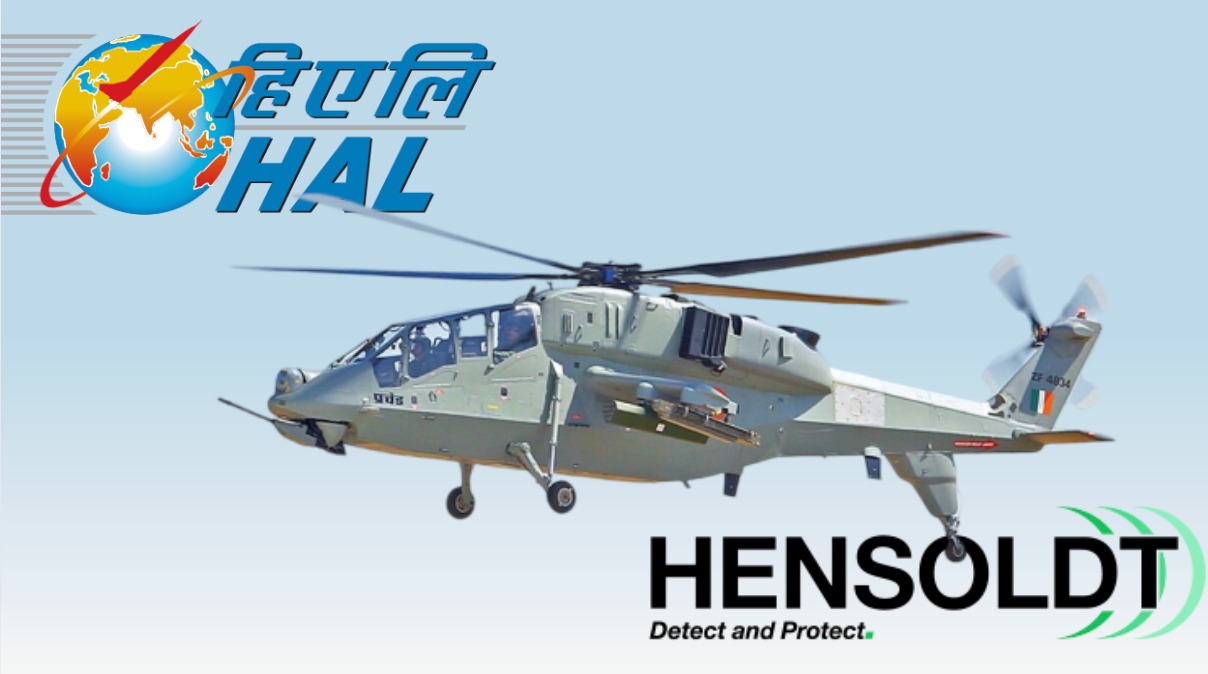Indian state-owned aerospace major Hindustan Aeronautics Limited (HAL) and German defence sensor manufacturer HENSOLDT have initiated one of the most advanced Indo–European helicopter safety collaborations in recent years with the launch of a jointly developed LiDAR-based Obstacle Avoidance System (OAS) for military rotorcraft. The programme was formally announced at the Dubai Airshow 2025 and is positioned to significantly expand both countries’ defence-industrial cooperation.
The OAS initiative is notable for its depth: HAL and HENSOLDT will co-develop the system under a built-to-spec framework that includes design refinement, technology transfer, and shared intellectual property rights. HAL will handle manufacturing, integration, long-term sustainment in India and will retain export rights for the OAS-equipped solution—an unusual model for a European-origin helicopter avionics technology.
A High-Fidelity LiDAR Solution for High-Risk Flight Environments
At the core of the programme is HENSOLDT’s SferiSense LiDAR, a mature obstacle-detection system built around a patented fibre-scanning mechanism that generates a homogeneous scan pattern across the field of view. The sensor is capable of detecting wires, cables, poles, ridgelines and other micro-obstacles with a ≥99.5% detection probability in the first second and at ranges exceeding 1,000 metres. Because LiDAR relies on optical wavelengths and narrow beam divergence, it can detect obstacles that millimetre-wave radars often fail to register—particularly thin wires encountered during low-level flight.
The LiDAR is paired with HENSOLDT’s Degraded Visual Environment (DVE) computer, which fuses synthetic vision and three-dimensional conformal symbology to enhance pilot situational awareness in brownout, whiteout, fog, haze and low-illumination conditions. The system can operate independently or within a wider avionics suite, and is designed with FACE (Future Airborne Capability Environment) and JCA (Joint Common Architecture) principles, allowing integration on both legacy and new-build helicopter platforms.

HENSOLDT-HAL officials ink major deal for Helicopter OAS Co-development at Dubai Airshow 2025
A Deep Industrial Model Rarely Seen in Indo–European Programmes
The HAL–HENSOLDT agreement stands out within Indo–European defence cooperation because of its scope. Beyond co-development, the programme includes design and manufacturing IPR sharing, enabling HAL to localise production and evolve the system domestically. HENSOLDT’s role centres on the core sensor technology, algorithmic processing and architecture-level support, while HAL will lead final integration, testing, customer support and future upgrades.
This model shifts India’s role from that of a buyer of proprietary avionics to a co-owner and manufacturer, and it aligns with India’s objective of creating sovereign capability in high-value aerospace subsystems.
For HENSOLDT, the partnership expands its footprint in Asia’s fastest-growing rotorcraft market, positioning the company as a long-term collaborator in India’s helicopter ecosystem and helping diversify its industrial base amid Europe’s broader supply-chain recalibrations.
What’s the Operational and Market Relevance?
India operates one of the world’s most diverse and active military helicopter fleets, flying routinely in high-altitude, high-density, low-visibility and rapidly shifting weather environments. CFIT (Controlled Flight Into Terrain) remains a leading operational risk in these conditions. The OAS programme seeks to address this gap with a terrain-adapted solution that can be integrated across existing and future indigenous helicopter families.
From an export perspective, HAL’s ability to offer a co-developed, high-fidelity safety suite strengthens the international competitiveness of its helicopter platforms in markets across Africa, Southeast Asia, Latin America and the Middle East—regions where India has already initiated military aviation outreach.
Global demand for helicopter safety technologies has risen sharply in recent years, driven by increased expeditionary operations, humanitarian deployments and rising attention to CFIT avoidance. The HAL–HENSOLDT programme positions both companies to participate in this expanding global segment.
Implications for Indo–German Defence Cooperation
The OAS project sits at the intersection of Germany’s post-2022 defence posture recalibration and India’s long-term effort to indigenise aerospace technologies. It represents one of the most high-technology industrial exchanges between the two countries in decades, building on earlier cooperative legacies such as the Dornier production line and HDW submarine programme.
For both HAL and HENSOLDT, the partnership provides an opportunity to shape helicopter safety standards in a region experiencing rapid military aviation growth and increasingly demanding mission profiles.
With full-scale integration expected after certification, the OAS programme is positioned to serve as a template for future sensor, avionics and mission-systems collaborations between Indian and European defence manufacturers.

